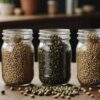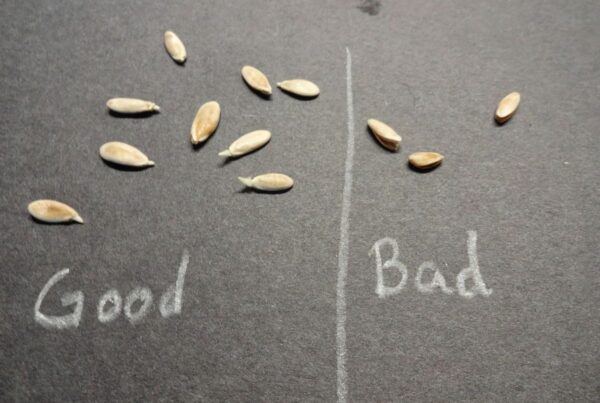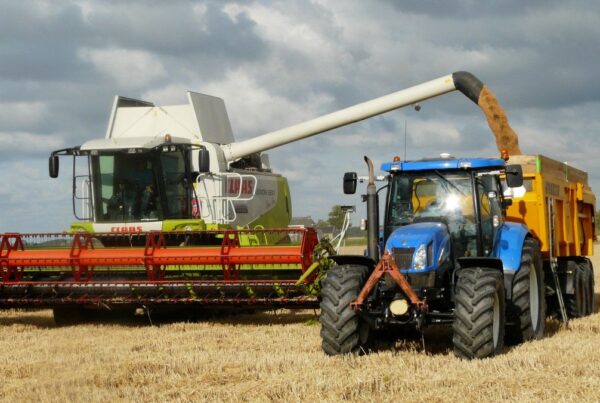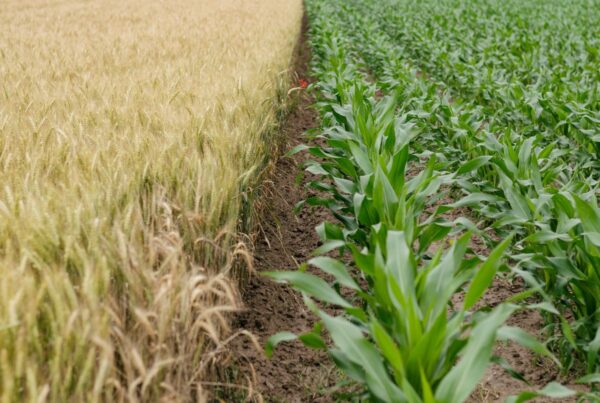Storing seeds effectively is crucial for maintaining their viability over time. Whether you’re a gardening enthusiast looking to preserve your heirloom seeds or a bird lover creating the perfect blend for your feathered friends, understanding the best practices for seed storage can make all the difference. This article delves into the various aspects of seed storage, from selecting the right containers to ensuring the ideal conditions to maximize seed longevity and quality.
Key Takeaways
- Select airtight containers such as glass jars or metal containers with secure lids to protect seeds from moisture, light, and pests, and consider using desiccant packs to control humidity.
- Store seeds in a cool, dark, and dry place to preserve their viability. A refrigerator or a cool basement are suitable locations, away from direct sunlight and heat sources.
- Regularly inspect stored seeds for signs of spoilage or mold, and maintain a clean and tidy storage area to prevent contamination and pest infestation.
- Practice a ‘first in, first out’ approach to seed rotation to ensure older seeds are used before newer ones, keeping the seed stock fresh and reducing waste.
- When crafting DIY birdseed mixes, tailor them to the preferences of local bird species, store them in well-sealed containers, and experiment with different seed combinations to attract a variety of birds.
The Perfect Seed Vault: Choosing Your Containers

Glass Jars vs. Plastic Bags: The Great Debate
Alright folks, let’s hash it out: glass jars or plastic bags for storing those precious seeds? Now, I’ve been in the cannabis game for a good while, and I’ve seen trends come and go, but when it comes to keeping your seeds snug as a bug, it’s a toss-up between these two. Glass jars are the old-school champs
-
Glass Jars: They’re like Fort Knox for your seeds. Airtight? Check. Blocks out light? You bet. Plus, they’ve got that classy look that says, ‘I mean business.’ Just make sure to keep ’em in a cool, dark place, and you’re golden.
-
Plastic Bags: They’re the lightweight contenders. Easy to stash, and if you’re using those vacuum-sealed wonders, they can be pretty darn airtight too. But beware, they can let in light and get punctured easier than you’d think.
Now, I ain’t saying one’s better than the other outright, but here’s a pro tip from your friendly neighborhood grower: throw in a desiccant pack, like those silica gel packets, to keep moisture out, no matter which side you’re on. And remember, folks, it’s not just about the container—it’s about how you use it. Keep ’em clean, keep ’em dry, and your seeds will thank you.
So, whether you’re a jar junkie or a bag buff, the key is to keep those seeds safe from the three big bads: air, light, and moisture. Get that right, and you’re on your way to a bountiful harvest.
The Dark Side of Seed Storage: Avoiding Light Exposure
Alright, folks, let’s talk about the boogeyman of seed storage: light exposure. You know, that sneaky little devil that creeps in and zaps the life right out of your precious seeds. Keep your seeds in the dark, like a vampire avoiding a suntan, to maintain their germination superpowers.
Here’s the lowdown on keeping those seeds in stealth mode:
- No sunbathing: Avoid windowsills or any spot where the sun can throw a party.
- Closet confidential: A dark closet or cabinet is like a VIP lounge for your seeds.
- Light-tight containers: If you’re using clear jars, think about slipping them into cozy, opaque bags.
Remember, light is to seeds what kryptonite is to Superman. Keep ’em shielded and they’ll be ready to spring into action when planting season rolls around.
And hey, if you’re ever in doubt, just think about how you’d store a fine wine or your favorite comic book collection. It’s all about preserving the goodness for the future. So, let’s keep those seeds happy, healthy, and in the dark—just like my humor.
Seal the Deal: The Importance of Airtight Containers
Alright folks, let’s talk about locking down those precious seeds like they’re the crown jewels. Airtight containers are the superheroes of seed storage, keeping your green babies safe from the evil clutches of moisture and air. Now, I’ve been in the game long enough to know that not all containers are created equal. Here’s the lowdown:
- Glass jars: They’re like the Fort Knox for seeds. See-through, so you can admire your stash, and tighter than a drum.
- Plastic bags: Not my first rodeo choice, but if you’re in a pinch, they can work. Just make sure they’re sealable and not just any ziplock bag you found lying around.
Remember, the goal is to keep your seeds as cozy as a bug in a rug. So, here’s a pro tip: throw in a desiccant pack or some silica gel to suck up any party-crashing moisture.
Keep it clean, folks. Before you stash your seeds, make sure those containers are as spotless as your reputation. We’re not just growing plants; we’re cultivating trust.
And don’t forget, this isn’t a ‘set it and forget it’ deal. Check on your seeds regularly, like they’re your little green children. A quick peek every now and then ensures everything’s hunky-dory. Because the last thing you want is to find out your seeds have gone to the great garden in the sky due to some sneaky mold.
Chill Out: Finding the Ideal Seed Storage Spot

Cool as a Cucumber: Why Temperature Matters
Alright folks, let’s talk about keeping your seeds chill, because when it comes to storing these little green babies, temperature is king. You don’t want your seeds sweating it out in some hot corner of your grow room. Keep ’em cool, around 68-77\u00b0F (20-25\u00b0C), and they’ll be happier than a hippie at a Grateful Dead concert. Too hot and they’ll think it’s grow time; too cold and they might just give up the ghost.
Here’s the lowdown on why that sweet spot is so darn important:
- It keeps those pesky biological breakdowns at bay.
- Seeds stay dormant, dreaming of the day they’ll sprout.
- You avoid turning your seed stash into a moldy mess.
Remember, consistency is your best friend here. Fluctuating temps are the enemy of seed longevity, so find that cool, stable nook and let your seeds hibernate in peace.
Now, if you’re like me and you’ve got more seeds than a squirrel before winter, you might want to consider the fridge. But hey, not too cold, alright? We’re not making seed-sicles here. And keep an eye on that humidity; around 40-50% is the sweet spot. Too much moisture and you’ll have a science experiment on your hands, and not the fun kind.
Basement or Fridge? Picking the Perfect Hideout
Alright, folks, let’s talk about the ultimate hideout for your precious seeds. Now, I’ve been in the game long enough to know that not all hideouts are created equal. You might be tempted to just shove ’em in a corner and call it a day, but trust me, that’s not gonna cut it. The humidity should stay below 60% and the temperatures should stay constant and as close to 40 F as possible. That’s the sweet spot, my friends.
So, where does that leave us? Well, you’ve got two solid contenders: the basement or the fridge. Here’s the lowdown:
- Basement: It’s like the Batcave for seeds if you do it right. Cool, dark, and usually undisturbed. Just make sure it’s not some damp dungeon, or you’ll have a horror story on your hands.
- Fridge: The icebox isn’t just for leftovers and beer. It’s a climate-controlled paradise for seeds. But, and this is a big but, you gotta keep ’em dry and away from the kitchen chaos.
Remember, consistency is key. A stable environment will keep your seeds happier than a hippie at a music festival.
Now, I’m not saying you need to build a fortress like that Svalbard Global Seed Vault, but a little effort goes a long way. Keep it cool, keep it dark, and keep those seeds snug as a bug in a rug. And hey, if you’re ever in Oklahoma, drop by and I’ll show you how it’s done, pro style.
Elevate Your Seeds: Keeping Moisture at Bay
Alright folks, let’s talk about keeping those precious seeds as dry as the humor in a dad joke. Moisture is like that one party crasher that just can’t take a hint – it’ll ruin your seeds faster than a squirrel at a bird feeder. Keep your seeds high and dry, and you’re halfway to a stash that’ll make your green-thumbed buddies green with envy.
Now, I’ve been at this gig for a good while, and if there’s one thing I’ve learned, it’s that seeds and moisture mix about as well as oil and water. You want to store your seeds in a place that’s as moisture-free as your grandma’s turkey (bless her heart). Here’s a quick rundown on how to keep those seeds snug and dry:
- Use airtight containers – think glass jars or those sealable plastic bags. But remember, no container is a match for a flood, so keep ’em elevated!
- Toss in a desiccant pack or some silica gel to suck up any of that sneaky moisture.
- Check on your seeds regularly, like you’re checking the score of the big game. You want to catch any moisture before it throws a party in your seed jar.
Remember, consistency is key. You don’t want your seeds thinking they’re on some wild weather rollercoaster.
And just to drive it home, here’s a little pro tip from your friendly neighborhood seed saver: keep your storage spot cooler than a cucumber, but not so cold that your seeds think they’ve moved to the Arctic. You’re aiming for that sweet spot where they can just chill without freezing their little seed buns off.
Mold Busters: Keeping Your Seeds Safe and Sound

The Sniff Test: Regular Checks for Freshness
Alright folks, let’s talk about keeping those precious seeds as fresh as the day they were picked. Now, I’ve been in the game long enough to know that a good sniff can tell you a lot about your seeds’ condition. If your seeds are starting to smell funkier than a skunk at a bass festival, it’s time to take action.
Here’s a quick checklist to keep your seeds in tip-top shape:
- Sniff test: Give ’em a good whiff every now and then. Any off smells, and you might have a problem.
- Visual inspection: Look for any discoloration or signs of mold. If it looks suspect, it probably is.
- Feel test: Seeds should be dry and firm. If they’re feeling a bit squishy, that’s a no-go.
Remember, your nose knows best. If something smells off, trust your instincts and investigate further.
And don’t forget, regular checks are your best defense against spoilage. Catching any funky business early means you can nip it in the bud before it ruins your whole stash. Keep those seeds smelling sweet, and you’ll be golden!
Spoilage Spotters: What to Look For
Alright folks, let’s talk about keeping our seeds from turning into a science experiment. First off, keep your peepers peeled for any funky colors or fuzz – that’s mold making itself at home, and trust me, it’s not the guest you want at your seed party. If your seeds are starting to smell like they’ve been hanging out in a damp basement, it’s time to say goodbye.
Now, I’ve been at this gig for a good while, and I’ve learned a thing or two about spotting trouble. Here’s a quick rundown:
- Discoloration: Seeds looking a bit off-color? Could be a sign they’re past their prime.
- Funky Smells: If your nose wrinkles up, that’s nature’s way of saying something ain’t right.
- Texture Changes: Seeds should be firm, not squishy or slimy.
Remember, your seeds are like little treasure chests, packed with potential. Treat ’em right, and they’ll reward you with bountiful harvests.
And don’t forget to label your seeds with all the important deets like strain name and harvest date. It’s not just about staying organized; it’s about respecting the journey from tiny seed to towering plant. Keep your storage spot clean and tidy, and consider tossing in some bay leaves or cedar blocks to keep the critters at bay. It’s all about creating a chill zone for your seeds to hang out until it’s their time to shine.
Clean Sweep: Maintaining a Tidy Storage Space
Alright folks, let’s talk about keeping our seed stash spotless. We all know that a clean space is a happy space, especially when it comes to our precious seeds. Regular cleaning is not just about being neat; it’s about protecting your investment. Make it a habit to sweep or vacuum your storage area to keep those pesky pests at bay. And don’t forget to give those containers a good scrub-a-dub-dub on the regular to prevent any mold or funky smells from cramping your style.
Now, I’ve been at this game for a long time, and if there’s one thing I’ve learned, it’s that a little organization goes a long way. Here’s a quick rundown of my go-to cleaning routine:
- Weekly: Quick sweep and spot check for any spilled seeds.
- Monthly: Deep clean of containers and shelves.
- Seasonally: Full inventory and rotation of stock to keep things fresh.
Remember, a clean seed storage space is not just about appearances; it’s about maintaining the quality and vitality of your seeds. So roll up those sleeves and get to it!
And hey, while you’re at it, why not throw in some natural deterrents like bay leaves or cedar blocks? They’re like kryptonite for bugs and they’ll keep your seeds smelling like a forest, not a musty old sock drawer. Keep it clean, keep it green, and your seeds will thank you for it.
Seed Shuffle: Mastering the Art of Rotation

First in, First Out: A Seed Saver’s Mantra
Alright folks, let’s talk about keeping our seeds as fresh as the jokes I tell at the dispensary. First in, first out—it’s not just a catchy phrase, it’s the golden rule in the seed biz. You gotta keep those seeds moving like a line dance at a honky-tonk to prevent any of them from turning into duds.
Here’s the lowdown on how to shuffle your seeds like a pro:
- Label your seed packs with the harvest date—trust me, your future self will thank you.
- Organize your seeds so the old-timers are up front and center. That way, you’ll grab ’em first.
- When you get a fresh batch, tuck them in the back like a secret stash. No mixing with the oldies!
Remember, a well-organized seed stash is like a well-tended garden—it thrives with a bit of attention and care. So, keep your seeds in line, and they’ll keep you smiling all the way to harvest time.
Stale Tales: Avoiding the Pitfalls of Old Seeds
Alright folks, let’s talk about the elephant in the room – old seeds. We’ve all been there, digging through our stash and finding those ancient seeds that have been kicking around since who knows when. Old seeds can be a real bummer, turning your green dreams into a sad, sprout-less reality.
Here’s the deal, you gotta keep your seeds as fresh as the tunes on your summer playlist. It’s all about that ‘first in, first out’ life. Use the oldies before you break out the newbies. And hey, don’t even think about mixing the old with the new – that’s like putting ketchup on a perfectly good steak.
- Label ’em: Write down the strain, harvest date, and any special notes.
- Check ’em: Peek in regularly for any moldy party crashers.
- Rotate ’em: Use the oldest seeds first, keep the cycle going.
Remember, your seeds are like little time capsules of your hard work. Treat ’em right, and they’ll treat you to some beautiful buds.
So, keep your seed game strong and your harvests plentiful. And if you’re ever in Oklahoma, drop by and see how we do it with a smile and a whole lot of love for the plant.
Rotation Motivation: Keeping Your Seed Stock Fresh
Alright folks, let’s talk about keeping those precious seeds as fresh as the day they were picked. Rotation is key in the seed game, just like in any other stash you’re keeping for the good times. You gotta keep that stock moving to ensure every seed has its moment to shine.
- First in, first out: Make it your mantra. Use the older seeds before breaking into the new stash. Keeps things fresher than a new pair of socks.
- Avoid mixing: Old seeds and new seeds are like oil and water, they don’t jive well. Use up the old before welcoming the new.
- Regular checks: Peek into your stash regularly. If it smells funkier than a skunk at a bass festival, it’s time to say goodbye.
Remember, a fresh seed is a happy seed. Keep ’em rotating, and you’ll avoid the heartache of a seed past its prime.
And hey, don’t go overboard buying seeds like there’s no tomorrow. Buy what you’ll use in a few months to keep everything top-notch. It’s like beer – you wouldn’t drink a stale one, so why feed your plants with stale seeds?
Mix Masters: Crafting the Ultimate Birdseed Blend

Custom Concoctions: Tailoring Mixes to Your Feathered Friends
Alright, fellow bird enthusiasts, let’s talk about crafting that primo birdseed blend for your backyard buddies. Mixing your own birdseed is like being a DJ at a feathered fiesta
-
you’ve got to know your audience and drop the seeds that’ll get them groovin’. Here’s a little cheat sheet to get you started:
-
Sunflower seeds: The all-time chart-topper for most birds.
-
Millet: A hit with ground-feeding birds.
-
Corn: Keeps the bigger beaked birds coming back for more.
-
Nyjer: The gourmet choice for finches.
Remember, the goal is to keep those wings flapping to the rhythm of your garden’s groove. And just like any good mix, you want to keep it fresh. So, when you’re storing your DIY mixes, make sure that container is sealed tighter than a drum to maintain that freshness.
Pro tip: Don’t just stick to one tune. Rotate your seed selection with the seasons to keep things interesting. Think extra high-energy seeds when it’s colder, and mix in some fruits during the summer jam sessions.
And hey, don’t forget to keep it clean. A tidy storage space means no party crashers (we’re looking at you, pests). So, sweep out those old seeds before laying down the new tracks. It’s all about that clean sweep, folks!
Seal of Freshness: Storing Your DIY Mixes
Alright folks, let’s talk about keeping those DIY birdseed mixes as fresh as the day you mixed ’em. Sealing your concoction is key; think of it like locking in the goodness so it doesn’t fly away. Now, I’ve been in the cannabis game for a good while, and if there’s one thing I know, it’s that freshness equals happiness—whether it’s for our feathered pals or our human customers.
Here’s a quick rundown on how to keep your mixes top-notch:
- Use airtight containers, like those trusty glass jars or even sealable plastic bags.
- Throw in a desiccant pack or some silica gel to suck up any pesky moisture.
- Store your stash in a cool, dark, and dry spot—think basement or fridge, but without the munchies.
Remember, the goal is to keep your seeds as snug as a bug in a rug, without any actual bugs or the dreaded mold.
And hey, while you’re at it, why not get a little wild and mix up the seed varieties? It’s like a surprise party for the birds, and you’re the DJ spinning the seed tracks. Just keep that freshness sealed, and you’ll be the talk of the treetops!
Trial and Tweet: Experimenting with Seed Varieties
Alright, folks, let’s talk about playing mad scientist with your seeds. Experimenting with different seed varieties is not just fun; it’s essential for keeping your feathered patrons chirping for more. Here’s a quick rundown on how to mix it up without causing a flap:
- Start with a base seed that’s a known crowd-pleaser.
- Gradually introduce new varieties, one at a time, to gauge the birds’ reactions.
- Keep notes on what’s flying off the shelves and what’s left gathering dust.
Remember, the goal is to create a blend that’s the cat’s pajamas for the birds, but also makes sense for your bottom line.
Now, don’t go mixing willy-nilly. Keep an eye on how your custom blends perform over time. If you hit on a winning combo, consider it your secret sauce and guard that recipe like it’s a treasure map. And hey, if a blend bombs, no sweat—just chalk it up to research and development. Keep tweaking until you’ve got a symphony of seeds that’ll have those birds tweeting your praises all over town.
Wrapping It Up with a Bow on Top!
Well, seed savers and bird buddies, we’ve raked through the nitty-gritty of seed storage like a chicken on a corn hunt! Remember, your seeds are like tiny time capsules, holding the promise of future greenery and chirpy visitors. Keep them snug as a bug in an airtight jar, chill them out in a cool, dark spot, and don’t let them party with mold or spoilage. Rotate your stock like a DJ spins records, and don’t mix the oldies with the fresh beats. Whether you’re safeguarding your cannabis genetics or keeping your feathered friends feasting, these best practices will have you storing seeds like a pro. So, go forth and store with confidence, knowing that your seeds are ready to sprout or snack on when the time is ripe!
Frequently Asked Questions
What are the best types of containers for storing seeds?
Airtight containers such as glass jars, metal or plastic containers with secure lids, or sealable plastic bags are ideal for storing seeds. They should be clean, dry, and free from contaminants to prevent mold and spoilage.
How should seeds be prepared before storage?
Seeds should be fully mature and dry before storage. Remove any plant matter or debris by gently rubbing the seeds or using a fine-mesh sieve. Consider treating seeds with chemicals to prevent microorganism growth.
What is the ideal temperature for storing seeds?
The temperature should be maintained around 2°C to prevent plant materials from breaking down. A cool basement or a refrigerator can be suitable locations for storing seeds.
How can I protect my seeds from light and humidity?
Store the seeds in a cool, dark, and dry place away from direct sunlight and moisture. Use desiccant packs or silica gel within containers to absorb residual moisture and maintain a stable environment.
What is the importance of rotating seed stock, and how is it done?
Rotating seed stock ensures that older seeds are used before newer ones, maintaining seed quality and preventing stale seeds. Use a ‘first in, first out’ approach by using older seeds first when refilling containers.
Can I mix old and new seeds when storing?
It’s best to avoid mixing old and new seeds to maintain the quality of your seed stock. Practice a rotation system to use up older seeds before adding fresh ones to your storage.








